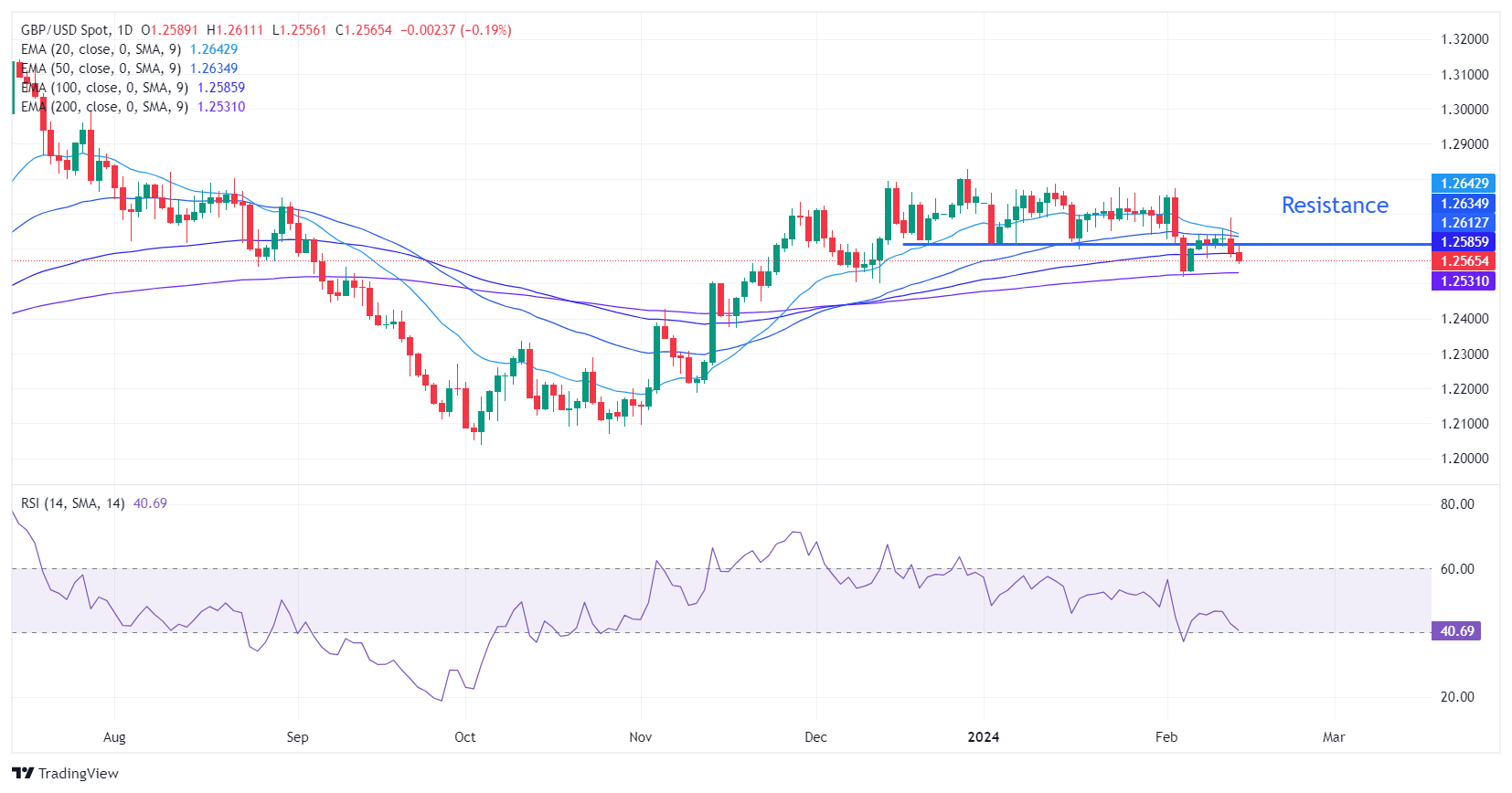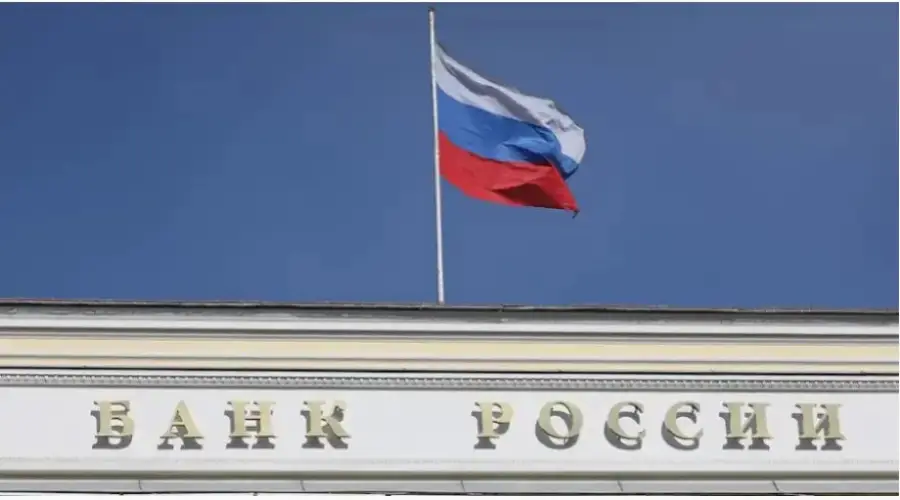- Sterling falls sharply following significant deflation in UK headline inflation in January.
- Weaker UK CPI data has boosted expectations of a Bank of England rate cut.
- US inflation data has pushed back hopes of a Fed rate cut.
The British Pound (GBP) faces an intense sell-off in the early hours of the European session on Wednesday, as the UK Office for National Statistics (ONS) reported softer-than-expected January inflation data. expected. The headline and core Consumer Price Index (CPI) rose steadily by 4.0% and 5.1% year-on-year, respectively, while the headline monthly figure deflated significantly by 0.6%.
A surprisingly soft inflation report and moderate growth in average earnings earnings are expected to allow policymakers at the Bank of England (BoE) to consider earlier rate cuts than market participants had previously anticipated.
Last week, BoE Deputy Governor Sarah Breeden stated that rate cuts will be based on how inflation and wage growth evolve. The British pound tends to face foreign flows if expectations of dovish expectations from the BoE rise.
The GBP/USD pair is expected to remain on the negative trajectory due to weakening consumer price inflation and dismal market sentiment. The overall appeal of safe-haven assets improves as US inflation data pushes back expectations of a rate cut decision by the Federal Reserve (Fed) at the May policy meeting. Fed policymakers lack evidence that gives them confidence that inflation will decline steadily toward the 2% target. This has boosted the US dollar as hawkish talk from the Fed tends to attract more foreign inflows.
Daily Market Summary: Pound Falls Hard, Dollar Tests Three-Month High
- The British pound resumed its bearish path after the UK's Office for National Statistics (ONS) reported moderate inflation for the month of January.
- General and core inflation grew stably, at 4.0% and 5.1% year-on-year, respectively. However, investors anticipated that the headline and underlying CPI would have accelerated to 4.2% and 5.1%, respectively.
- Monthly headline inflation deflated at a strong pace of 0.6%, compared to the consensus of 0.3%. In December, economic data expanded 0.4%.
- The sharp decline in monthly inflation data is expected to raise expectations of an early rate cut by the Bank of England.
- A weak inflation report has neutralized decent labor demand and moderate growth in average earnings data for the three months ending in December, released on Tuesday.
- The Unemployment Rate fell sharply to 3.8%, below the consensus of 4.0% and the previous release of 4.2%.
- Average hourly earnings, including bonuses, grew at the slowest pace of 5.8% year-on-year since the three months ended July 2022, while investors projected slower wage growth of 5.6%.
- On Tuesday, GBP/USD witnessed an intense sell-off after the US Bureau of Labor Statistics (BLS) reported January core inflation.
- US core inflation, which removes volatility from food and energy prices, rose 3.9%, while investors expected a decline to 3.7%.
- Persistent price pressures dampened expectations of Federal Reserve rate cuts in May.
- The DXY Dollar Index advanced to 105.00 amid discouraging sentiment in the markets.
Technical Analysis: Sterling retreats towards 1.2500
The British Pound retreats vertically after failing to stay above the support of the 1.2600 round level. The short-term outlook for the GBP/USD pair has turned bearish as it has fallen below the 20-, 50-, and 100-day EMAs. GBP/USD is declining towards the 200-day EMA, which is around 1.2510.
The 14-period Relative Strength Index (RSI) has fallen to 40. A slide below it would trigger bearish momentum.
Pound Sterling FAQ
What is the Pound Sterling?
The British Pound (GBP) is the oldest currency in the world (886 AD) and the official currency of the United Kingdom. It is the fourth most traded currency unit in the world, with 12% of all transactions and an average of $630 billion per day, according to 2022 data.
Its key currency pairs are GBP/USD, also known as “Cable”, which represents 11% of the forex market, GBP/JPY, or the “Dragon” as it is known to traders (3%), and EUR/GBP (2%). The pound sterling is issued by the Bank of England (BoE).
How do Bank of England decisions influence the Pound Sterling?
The most important factor influencing the value of the Pound Sterling is the monetary policy decided by the Bank of England. The Bank of England bases its decisions on achieving its main objective of “price stability”, that is, a stable inflation rate of around 2%. Its main tool to achieve this is the adjustment of interest rates.
When inflation is too high, the Bank of England tries to contain it by raising interest rates, which makes access to credit more expensive for individuals and companies. This tends to be positive for the GBP, as higher interest rates make the UK a more attractive place for global investors to park their money.
When inflation is too low, it is a sign that economic growth is slowing. In this scenario, the BoE will consider lowering interest rates to make credit cheaper, so that companies borrow more to invest in projects that generate growth.
How does economic data influence the value of the Pound?
The published data gauges the health of the economy and may influence the value of the Pound sterling. Indicators such as GDP, manufacturing and services PMIs, and employment can influence the direction of the Pound.
A strong economy is good for the British pound. Not only does it attract more foreign investment, but it may encourage the Bank of England to raise interest rates, which will directly strengthen the Pound. Otherwise, if economic data is weak, the pound is likely to fall.
How does the trade balance affect the Pound?
Another significant data for the pound sterling is the trade balance. This indicator measures the difference between what a country earns from its exports and what it spends on imports during a given period.
If a country produces highly sought-after exports, its currency will benefit exclusively from the additional demand created by foreign buyers wishing to purchase these goods. Therefore, a positive net trade balance strengthens a currency and vice versa for a negative balance.
Source: Fx Street
I am Joshua Winder, a senior-level journalist and editor at World Stock Market. I specialize in covering news related to the stock market and economic trends. With more than 8 years of experience in this field, I have become an expert in financial reporting.








